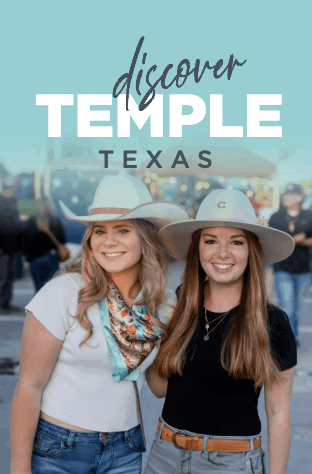Population & Demographics: Understanding Our Diverse Community
A Dynamic Community of Over Half a Million: Where Growth Meets Opportunity
When you choose Temple, Texas, you’re joining a metropolitan area experiencing some of the most dynamic growth in the entire state. The Killeen–Temple Metropolitan Statistical Area now exceeds 509,000 residents, marking a 21% increase since 2020—the eighth-fastest growth rate among all Texas metros. Temple itself has surpassed 100,000 residents, a testament to its growing appeal as both a professional and family destination. This isn’t a stagnant community—it’s a city expanding with purpose, where physicians grow alongside a thriving and evolving population.
Unlike saturated metropolitan areas competing for aging populations, Temple’s median age of 33.8 reflects a balanced demographic spread. Here, your practice will serve everyone—from young families (24% under 18) to working professionals and active retirees who enjoy Central Texas’s year-round outdoor lifestyle. This equilibrium sustains long-term patient relationships across generations and provides consistent demand for comprehensive medical care.
- Metropolitan area: 509,487 residents (2024)
- City of Temple: 100,057+ residents (2025)
- Growth rate: 21% since 2020 (8th fastest in Texas)
- Median age: 33.8 years
- Household composition: 68% families, 32% single-person
- Average household size: 2.44 persons
A Tapestry of Cultures and Backgrounds
Temple’s strength lies in its cultural diversity, creating a welcoming environment for families and professionals from around the world. The population reflects a rich blend of backgrounds—62.4% White, 29.1% Hispanic or Latino, 13.2% Black or African American, and a growing Asian and multiracial community. This diversity fuels a vibrant cultural scene, from heritage festivals to globally inspired cuisine and performing arts that rival those in larger cities.
At the heart of Temple’s cultural life is the Cultural Activities Center, which hosts the Texas Music Series, Classical Music Series, and rotating art exhibitions celebrating regional and international creativity. The popular First Friday downtown celebrations transform the historic district into a multicultural street fair with live music, global cuisine, and local art. This environment ensures your family experiences a community where cultural appreciation and connection thrive year-round.
Military Heritage: Serving Those Who Served
Temple’s close proximity to Fort Cavazos (formerly Fort Hood)—the nation’s largest active-duty armored post just 30 miles away—deeply shapes its character. Over 60,000 veterans now call the region home, representing 13% of the population (compared to 5% nationally). Each month, approximately 300 service members transition from Fort Cavazos, and nearly 40% choose to remain in Central Texas for its quality of life, access to world-class healthcare, and veteran-friendly culture.
For physicians, this means a steady patient base through VA Community Care Network, TRICARE, and private insurance. Many local employers—including Baylor Scott & White Health, McLane Company, and BNSF Railway—are recognized as Military Friendly® organizations, reflecting Temple’s deep commitment to those who have served. The military population’s emphasis on discipline, preventive care, and adherence to treatment fosters strong, rewarding doctor-patient relationships.
- Veteran population: 60,000+ (13% of region)
- Monthly transitions: ~300 personnel
- Economic impact: Billions annually from Fort Cavazos
- Military-friendly employers: Multiple Gold & Silver designees
- VA partnerships: Community care and research opportunities
Economic Vitality and Professional Opportunities
Temple’s economy combines stability and opportunity in equal measure. The median household income of $64,945 and per capita income of $45,208 create a strong foundation for healthcare utilization, ensuring a robust payer mix and consistent demand. While 17.25% of residents live below the poverty line, this also presents opportunities for meaningful public health outreach and partnerships through federal programs.
Unlike single-industry towns, Temple boasts a diverse economic base. Major employers include McLane Company (Fortune 500 logistics), Wilsonart International (global manufacturing), BNSF Railway, and a growing network of educational institutions such as Temple College and Texas A&M Health Science Center. This mix provides professional opportunities for physician spouses in healthcare, education, business, and entrepreneurship—creating a well-rounded community economy.
Educational Attainment and Community Values
Education forms the backbone of Temple’s civic identity. Temple College serves more than 5,000 students annually, while nearby universities—including University of Mary Hardin–Baylor and Texas A&M College of Medicine—cultivate an academic environment that attracts lifelong learners and professionals alike. The city’s commitment to educational excellence ensures exceptional public and private school options for your children, surrounded by peers and families who share similar values.
Temple’s Czech heritage continues to influence its culture—evident in its work ethic, family focus, and deep sense of community pride. Local businesses, many family-owned for generations, embody these traditions, while volunteer organizations and neighborhood associations sustain a spirit of service and connectedness. In Temple, your medical practice becomes part of this living tradition—where patients aren’t just names in an EMR but neighbors who value your expertise and care.
The Ideal Patient Base for a Thriving Practice
Temple’s expanding, diverse, and well-balanced population creates the perfect environment for physicians seeking a meaningful, sustainable practice. Your patient panel will include young families establishing roots, veteran households with strong healthcare engagement, and retirees drawn by the region’s affordability and medical excellence. You’ll serve everyone from tech professionals commuting to Austin to third-generation Czech-American families still farming the Central Texas plains.
In Temple, you’ll rediscover what many metropolitan physicians have lost—the chance to know your community, grow alongside your patients, and build a career defined not just by success, but by genuine connection and purpose.
